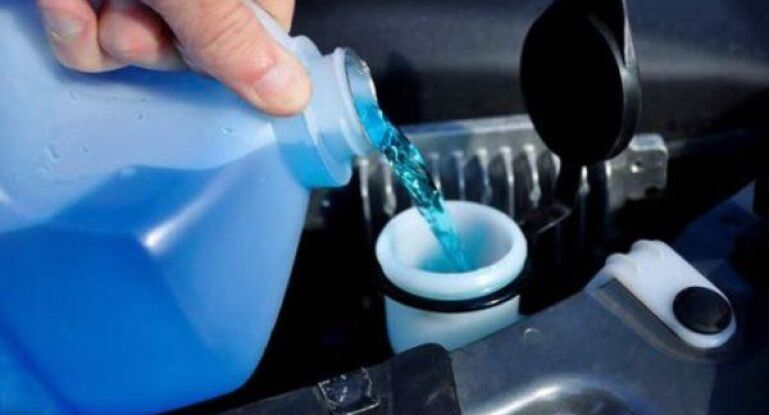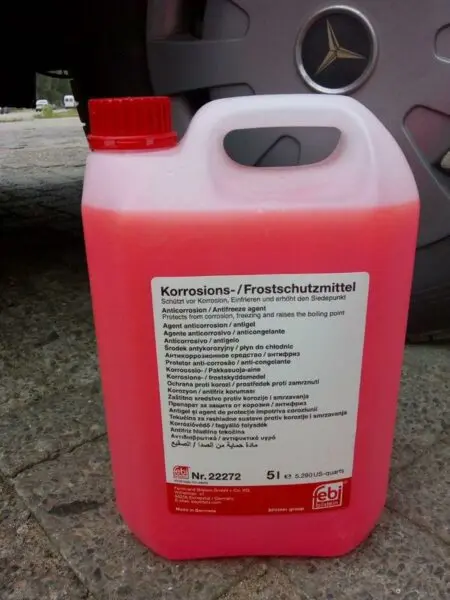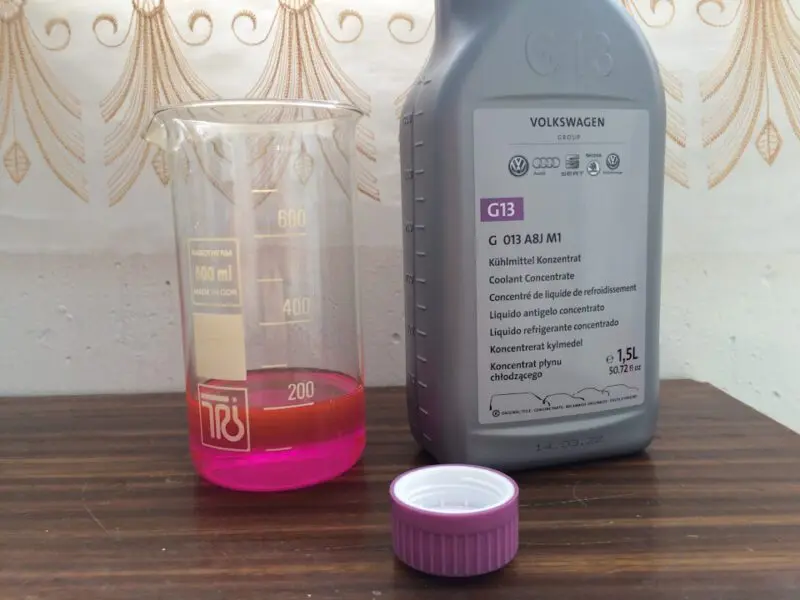
What is G12 antifreeze - the difference from G11, G12 +, G13 and which one needs to be filled
Content
Antifreeze is needed to cool a car engine. Today, coolants are classified into 4 types, each of which differs in additives and some properties. All the antifreeze you see on store shelves is made up of water and ethylene glycol, and that's where the similarities end. So how do coolants differ from each other, in addition to color and cost, choose the right antifreeze for your car, is it possible to mix different coolants and dilute them with water - read on.

What is antifreeze?
Antifreeze is the common name for vehicle coolant. Regardless of the classification, propylene glycol or ethylene glycol is present in the composition of antifreeze, and its own package of additives.
Ethylene glycol is a toxic dihydric alcohol. In its pure form, it is an oily liquid, it tastes sweet, its boiling point is about 200 degrees, and its freezing point is -12,5 °. Remember that ethylene glycol is a dangerous poison, and a lethal dose for a person is 300 grams. By the way, the poison is neutralized with ethyl alcohol.
Propylene glycol is a new word in the world of coolants. Such antifreezes are used in all modern cars, with stringent toxicity standards, in addition, propylene glycol-based antifreeze has excellent lubricating and anti-corrosion properties. Such alcohol is produced using the light phase of oil distillation.
Where and how antifreezes are used
Antifreeze found its application only in the field of road transport. Often it is used in the heating system of residential buildings and premises. In our case, the main task of antifreeze is to maintain the operating temperature of the engine in a given mode. Coolant is used in a closed jacket of the engine and line, it also passes through the passenger compartment, due to which warm air blows when the stove is turned on. On some cars, there is a heat exchanger for automatic transmission, where antifreeze and oil intersect in parallel in one housing, regulating the temperature of each other.
Previously, a coolant called "Tosol" was used in cars, where the main requirements are:
- maintaining the operating temperature;
- lubricating properties.
This is one of the cheapest fluids that cannot be used in modern cars. A number of antifreezes have already been invented for them: G11, G12, G12 + (++) and G13.

Antifreeze G11
Antifreeze G11 is produced on a classic silicate basis, it contains a package of inorganic additives. This type of coolant was used for cars manufactured before 1996 (although the tolerances of some modern cars up to 2016 make it possible to fill in G11), in the CIS it was called "Tosol".
Thanks to its silicate base, G11 performs the following functions:
- creates protection for surfaces, preventing ethylene glycol from damaging them;
- slows down the spread of corrosion.
When choosing such antifreeze (its color is blue and green), pay attention to two features:
- the shelf life does not exceed 3 years, regardless of the mileage. During operation, the protective layer becomes thinner, these pieces, getting to the coolant, lead to its accelerated wear, as well as damage to the water pump;
- the protective layer does not tolerate high temperatures, more than 105 degrees, so the heat transfer of G11 is low.
All disadvantages can be avoided by timely changing the antifreeze and preventing engine overheating.
Also remember that the G11 is not suitable for vehicles with an aluminum block and radiator as the coolant is not able to protect them at high temperatures. Be careful when choosing low-cost manufacturers, such as Euroline or Polarnik, ask to perform a test with a hydrometer, situations often arise when the coolant labeled “-40 °” in fact turns out to be -20 ° and higher.

Antifreeze G12, G12 + and G12 ++
G12 brand antifreeze is red or pink. It no longer has silicates in its composition, it is based on carboxylate compounds and ethylene glycol. The average service life of such a coolant is 4-5 years. Thanks to properly selected additives, anti-corrosion properties work selectively - the film is created only in places damaged by rust. G12 antifreeze is used in high-speed engines with an operating temperature of 90-110 degrees.
The G12 has only one drawback: anti-corrosion properties appear only in the presence of rust.
Most often G12 is sold as a concentrate with a “-78 °” or “-80 °” mark, so you need to calculate the amount of coolant in the system and dilute it with distilled water. The ratio of water to antifreeze will be indicated on the label.
For G12 + antifreeze: it is not much different from its predecessor, the color is red, the improved one has become safer and more environmentally friendly. The composition contains anti-corrosion additives, working pointwise.
G12 ++: Most often purple, an improved version of carboxylated coolants. Lobride antifreeze differs from G12 and G12 + in the presence of silicate additives, thanks to which the anti-corrosion properties work pointwise and prevent the formation of rust.

Antifreeze G13
The new class of antifreeze is available in purple. Hybrid antifreeze has a similar composition, but a more optimal ratio of silicate and organic components. It also features improved protective properties. It is recommended to change every 5 years.

Antifreeze G11, G12 and G13 - what's the difference?
The question often arises - is it possible to mix different antifreezes? To do this, you need to delve into the characteristics of each coolant to understand compatibility.
The huge difference between G11 and G12 is not the color, but the key composition: the former has an inorganic/ethylene glycol base. You can mix it with any antifreeze, the main thing is that there is class compatibility - G11.
The difference between G12 and G13 is that the second has a propylene glycol base, and the environmental safety class is several times higher.
For mixing coolants:
- G11 does not mix with G12, you can only add G12 + and G13;
- G12 interferes with G12 +.
Questions and answers:
What is antifreeze used for? It is the working fluid of the car engine cooling system. It has a high boiling point and consists of water and additives that lubricate the pump and other CO elements.
Why is antifreeze called that? Anti (against) Freeze (freeze). This is often the name for all anti-freezing fluids used in cars. Unlike antifreeze, antifreeze has a lower crystallization temperature.
What antifreezes are there? Ethylene glycol, carboxylated ethylene glycol, hybrid ethylene glycol, lobrid ethylene glycol, propylene glycol. They also differ in color: red, blue, green.


2 comment
Pinch
I had this. Antifreeze and oil mixed, as a result, foam under the hood. Then I had to wash it off with kerechrome for a long time. I don’t take any more deshmans. I filled in coolstream qrr after the repair (I chose it by admission and imported additives), no more problems arose
anonym
Still so confused sorry
Which ones kill cats?